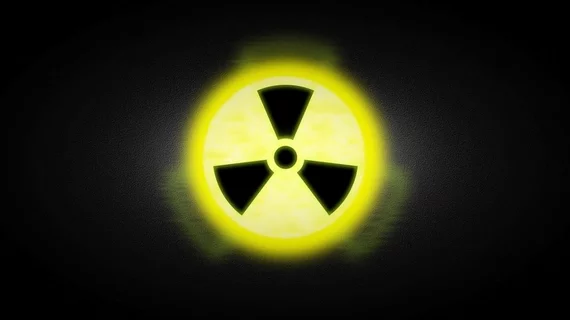Introducing a dose-monitoring software to procedures in interventional and neuro-interventional radiology could be useful for tracking patient radiation thresholds and improving procedural performance, Brandon C. Perry, MD, and colleagues at the University of Washington have reported in Academic Radiology.
Increasingly complex procedures mean interventional radiology patients are exposed to more fluoroscopy and radiation than ever before. Radiation-induced tissue reactions like hair and skin injuries are typically rare and self-limiting, but not always.
“Some tissue reactions can be severe with debilitating side effects, requiring surgical repair or other interventions,” Perry et al. said. “Many severe injuries occur because the operator was not aware of the patient’s radiation dose during the procedure and did not take appropriate steps to reduce dose or follow the patient appropriately after the procedure.”
National guidelines, including those of the Society of Interventional Radiology (SIR), dictate certain thresholds for radiation doses that might produce clinically relevant injuries in the average patient. SIR, specifically, defines that “significant” dose as reference point air kerma greater than 5,000 mGy.
“Major keys to an effective patient dose safety program are accurate monitoring and recording of dose and appropriate patient follow-up,” Perry and co-authors wrote. “To better monitor our doses in all modalities, we installed dose management software in all angiography rooms and our level I trauma center.”
The software, a French development termed DoseWatch, is a HIPPA-compliant program designed to automatically collect, record and analyze radiation administered to patients, the authors said, and has the ability to flag cases that reach certain dose thresholds. The research team assessed the utility of DoseWatch at Harborview Medical Center in Seattle, Washington, where 3,582 relevant procedures were performed over a one-year period.
DoseWatch was successful in transferring radiation dose data in 93.9 percent of cases, the authors said. Ten interventional radiology procedures and 52 neuro-interventional radiology procedures exceeded estimated skin doses of greater than 5,000 mGy, though all 10 IR cases saw no reported tissue reactions. Five NIR patients reported skin or hair injuries, though all were temporary.
Perry and colleagues said the trial was successful in implementing software that could successfully monitor appropriate radiation doses without heavy involvement from clinicians.
“We have demonstrated that the introduction of dose monitoring software for interventional procedures can be successful,” the authors wrote. “We believe that a similar strategy of data collection and analysis can be used to improve the performance of any interventional radiology or neuro-interventional radiology department.”

